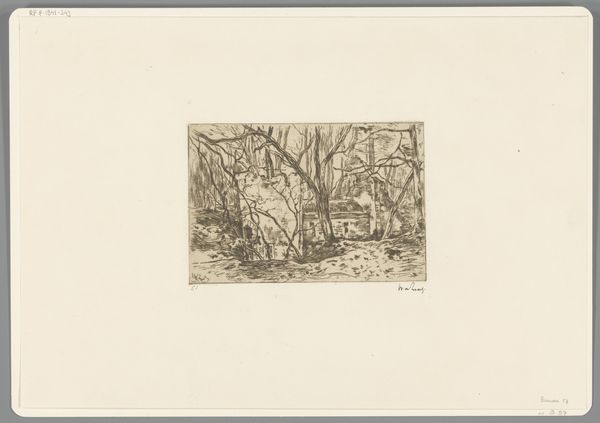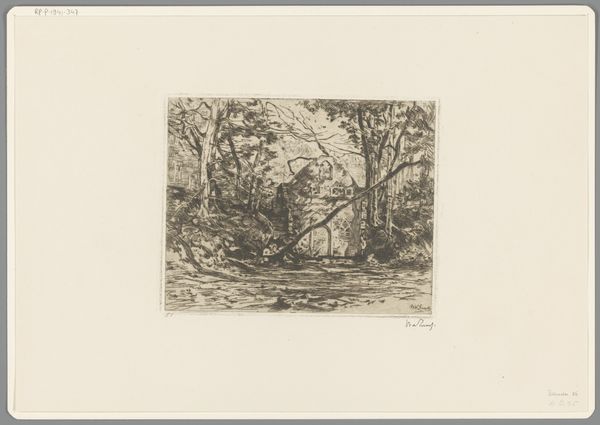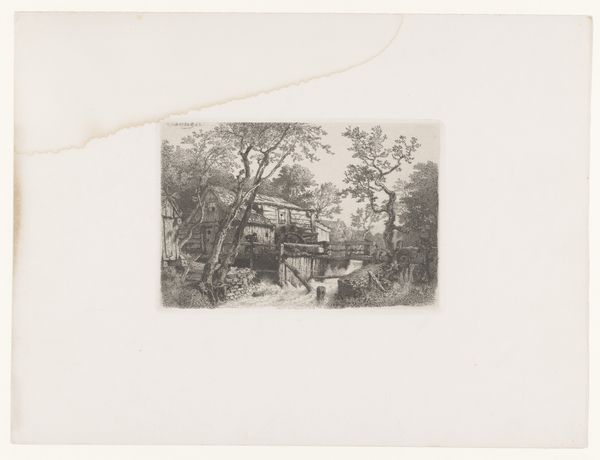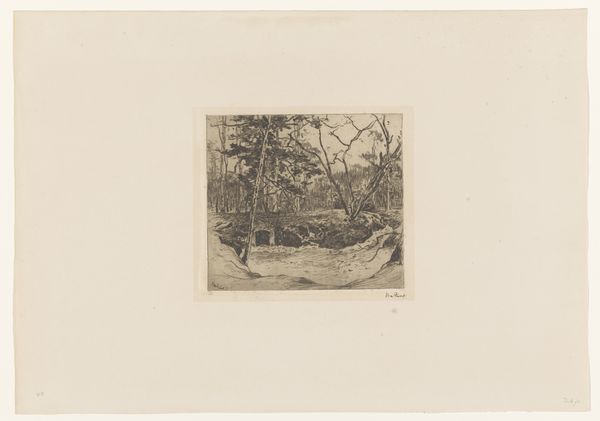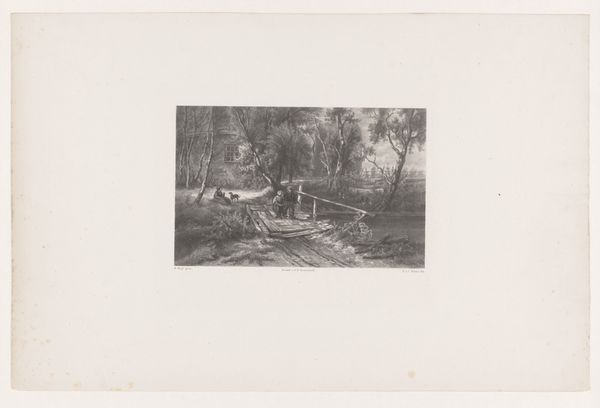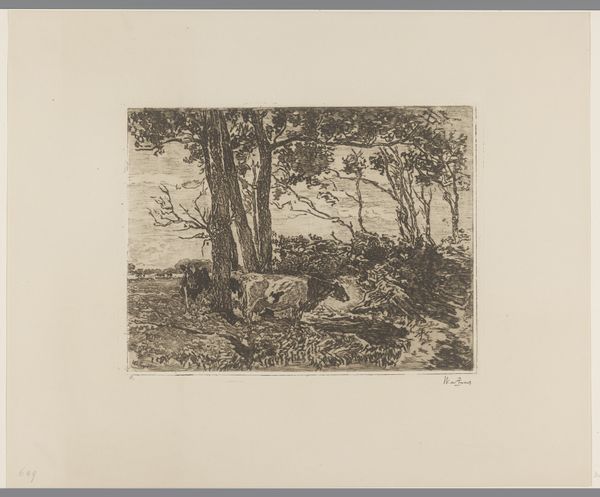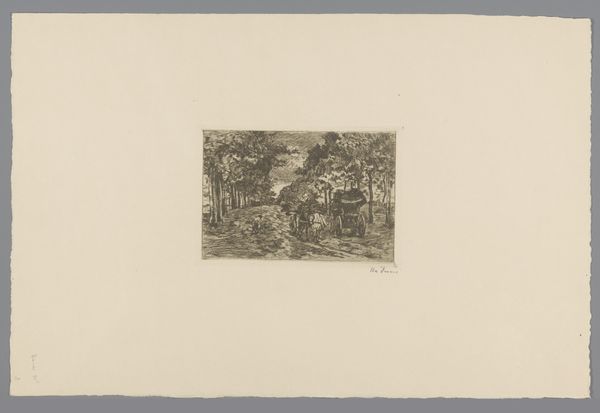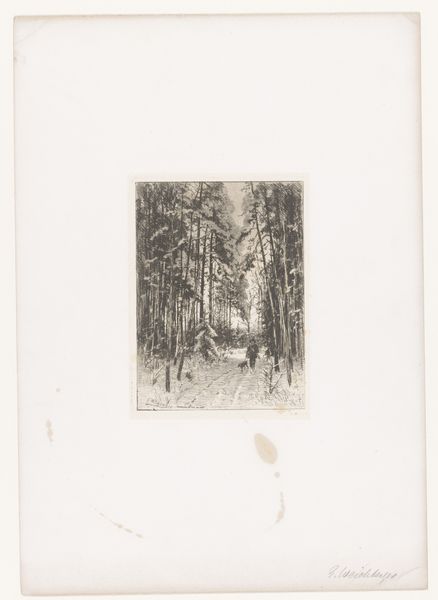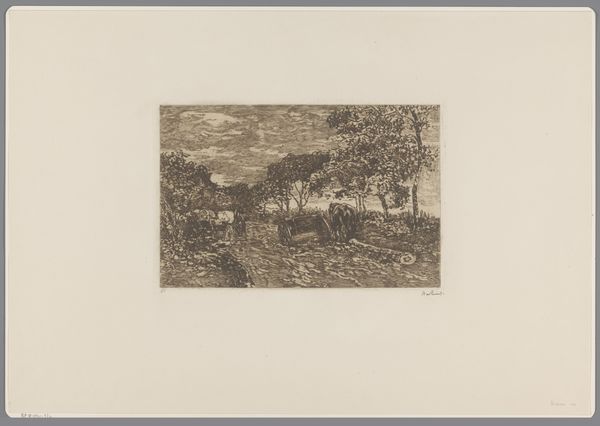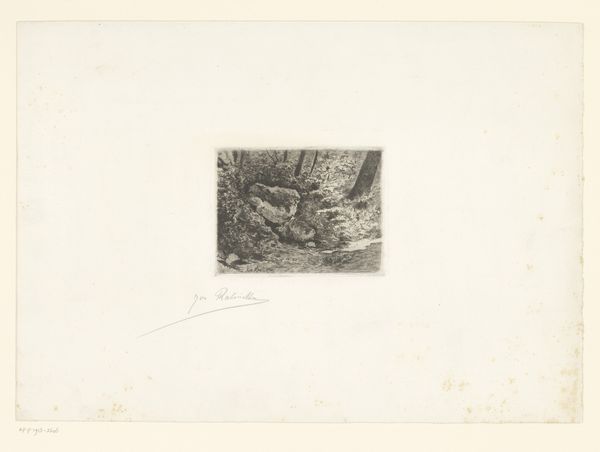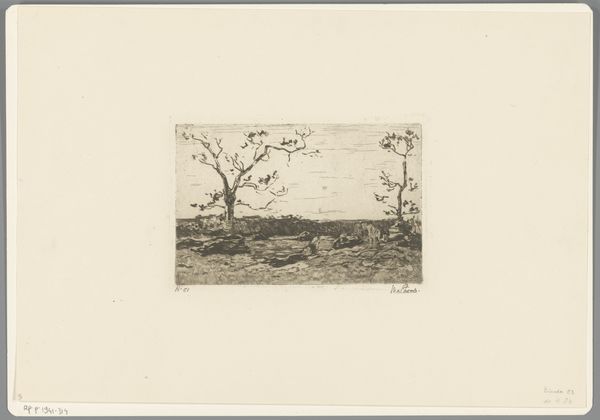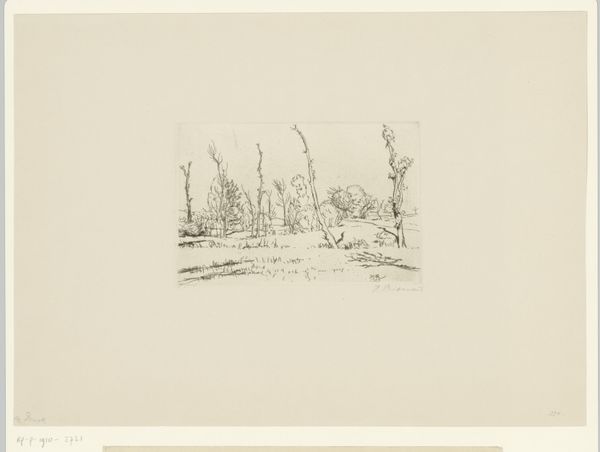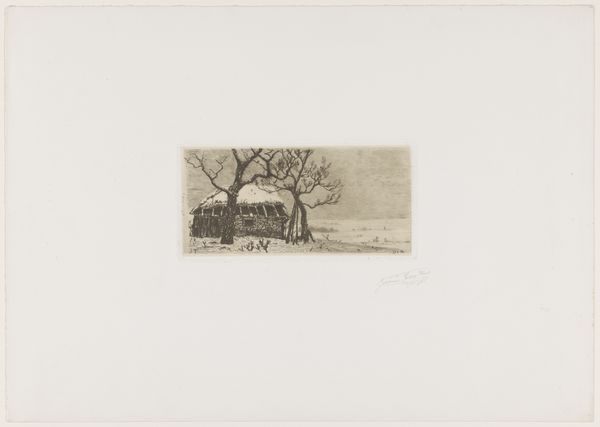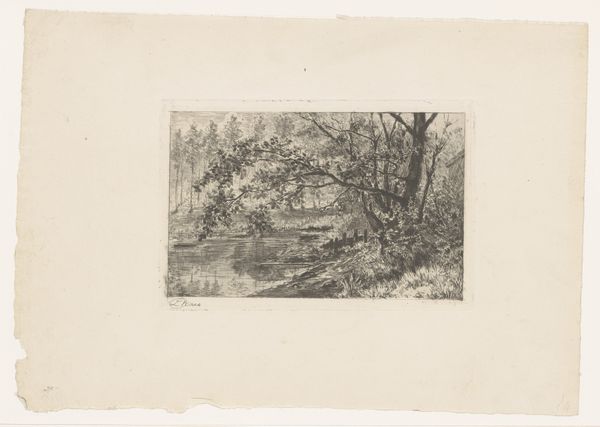
Dimensions: height 125 mm, width 179 mm
Copyright: Rijks Museum: Open Domain
Willem de Zwart created this small etching of a ruin in the woods in the Netherlands, sometime around 1900. The image of a decaying building, once a symbol of power and permanence, overtaken by the natural world, speaks volumes about changing social and political landscapes. In the late 19th and early 20th centuries, the Netherlands, like many European countries, was undergoing significant social and economic change. The rise of industrialization and urbanization led to the decline of traditional rural life, and images of ruins became popular symbols of this lost past. De Zwart, trained at the Hague Academy, was part of a generation of artists who questioned the established artistic norms and sought to capture the realities of modern life. To fully understand this artwork, it is essential to consider the social and institutional context in which it was created. Art historical research into the artist's life, the artistic movements of the time, and the social and economic conditions of the Netherlands can provide valuable insights into its meaning and significance.
Comments
No comments
Be the first to comment and join the conversation on the ultimate creative platform.
